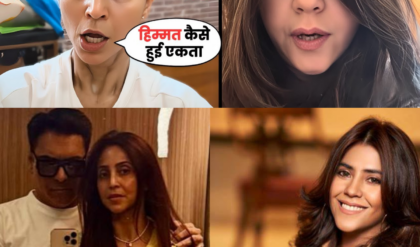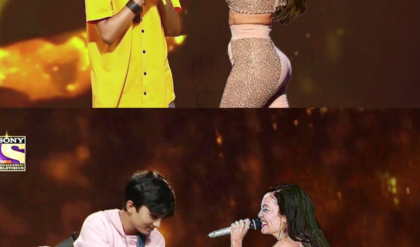The Real Truth of Indian Movie ‘Item Songs’
.
.
In the vibrant world of Indian cinema, the term “item song” has become synonymous with the glitzy, seductive, and often controversial musical numbers that appear in many mainstream Bollywood films.
With their catchy beats, extravagant choreography, and scintillating performances, item songs are a staple of commercial Hindi cinema.
They have evolved over the years, transitioning from being mere fillers in a movie to becoming major selling points, often influencing the marketing and popularity of the film.
However, beneath the surface of their catchy tunes and lavish dance sequences lies a deeper, more complex truth. What is the real purpose of item songs in Indian cinema?
Are they just harmless entertainment, or do they perpetuate harmful stereotypes and attitudes toward women?
This article delves into the history, evolution, cultural implications, and controversies surrounding item songs in Bollywood, offering a nuanced perspective on their role in Indian cinema.
The Origin of Item Songs
The concept of “item songs” is believed to have evolved in the 1970s and 1980s, but its roots can be traced back much earlier to classical dance forms in India, such as Bharatanatyam, Kathak, and Odissi.
These forms were often used as entertainment in temples, royal courts, and during social gatherings, with dancers performing to music that was both devotional and celebratory.
However, the idea of the “item song” as we know it today – a distinct musical number inserted into the narrative of a commercial film – was popularized in the 1970s with the rise of Bollywood’s mainstream, masala cinema.
Masala films, characterized by their mix of drama, romance, action, and melodrama, often included songs to elevate the entertainment quotient of the narrative.
During this period, item songs were used to add energy and appeal to films. They typically featured female dancers performing provocative or attention-grabbing routines, often appearing as “special appearances” in films, unrelated to the main plot.
These songs were rarely integrated into the story and were used to boost a film’s commercial appeal, often by attracting the male audience.
One of the earliest examples of a song that could be classified as an “item number” is the song Pehla Pehla Pyaar from the 1950s, though it wasn’t as overtly sexualized as later versions.
However, it wasn’t until the 1970s and 1980s that the genre began to take its current form. Songs like Parda Hai Parda from Amar Akbar Anthony (1977) and Hawa Hawai from Mr. India (1987) began to set the tone for what item songs would become—musical interludes that existed purely to entertain, often with little narrative or emotional depth.
The Evolution and Commercialization of Item Songs
Over the decades, the evolution of item songs in Bollywood was driven by a variety of factors, including changing audience tastes, the desire to increase box office revenues, and the growing influence of the music industry in shaping a film’s success.
By the 1990s and 2000s, item songs became an integral part of commercial cinema, often appearing as a way to inject a sense of excitement or sensuality into a film.
During the 1990s, Bollywood movies saw an increasing focus on glamorizing the female body. Female actors, often not integral to the plot, began to appear in films for the sole purpose of performing item numbers.
In the 2000s, the trend accelerated with the introduction of popular stars such as Katrina Kaif, Malaika Arora, and Kareena Kapoor Khan, who became synonymous with iconic item songs like Munni Badnam Hui (Dabangg, 2010), Sheila Ki Jawani (Tees Maar Khan, 2010), and Chikni Chameli (Agneepath, 2012).
The shift from “dancers” to “stars” performing item songs is another key milestone in the genre’s evolution. These songs were now used to market the film itself, and the actresses performing them would often receive more attention than the lead cast members. The release of an item song would often be accompanied by heavy promotion on television, social media, and music channels, creating a huge buzz around the film even before its theatrical release.
At the same time, item songs became a phenomenon on YouTube and other digital platforms, where they gained immense popularity due to their mass appeal. Songs like Baby Doll from Ragini MMS 2 (2014) or Kala Chashma from Baar Baar Dekho (2016) became viral sensations, with millions of views and frequent airplay on radio and television. These songs often feature highly stylized music videos with choreographed dance routines that further boosted their appeal.
The Sexualization of Women: A Controversial Trend
While item songs have been instrumental in enhancing the entertainment value of Bollywood films, they have also attracted significant criticism over the years for their portrayal of women.
The primary issue with item songs is the sexualization of female bodies, often reducing women to objects of desire. The lyrics, choreography, and visuals of many item songs perpetuate a narrow, hyper-sexualized image of femininity, which is not only problematic but also reinforces outdated and harmful gender stereotypes.
In many item songs, the female performer is often seen as a seductress, enticing the male protagonist or the audience with her suggestive dance moves, revealing clothing, and suggestive lyrics. The lyrics, in particular, have often been criticized for their objectification of women.
For instance, songs like Munni Badnam Hui (which translates to “Munni became infamous”) and Fevicol Se (from Dabangg 2, 2012) suggestively depict women in ways that emphasize their physical appeal rather than their individuality or personality.
Critics argue that these songs contribute to a culture that reduces women to mere objects of lust. By portraying women as passive recipients of male attention and desire, these songs perpetuate the idea that a woman’s worth lies primarily in her appearance and sexual appeal.
This often leads to a skewed perception of women in real life, where they are judged more for their looks and sensuality than for their skills, intellect, or personality.
Moreover, these songs are frequently criticized for perpetuating violence and misogyny. Many item songs feature lyrics that depict women as submissive or suggest that they can be “owned” or “conquered” by men.
These depictions can contribute to a culture of sexism, where women are expected to conform to unrealistic beauty standards and are judged harshly if they fail to meet these standards.
The Male Gaze and Patriarchal Power Structures
The concept of the “male gaze” is key to understanding the problematic nature of many item songs. Coined by feminist film theorist Laura Mulvey, the male gaze refers to the way in which visual media often frames women from a male point of view, turning them into objects of male pleasure and desire.
In item songs, the camera often lingers on the female body, highlighting curves, movements, and skin. The choreography is often explicitly designed to appeal to the male gaze, with suggestive and sensual movements that invite the viewer to focus on the woman’s physicality.
This male-centric perspective reinforces the patriarchal power structures that dominate both the film industry and society at large. By positioning women as objects to be looked at and desired, these songs help perpetuate the gender dynamics of Bollywood, where women are often relegated to secondary roles and men are the primary decision-makers and power holders.
Interestingly, despite their objectification, item songs have been a space where women have also exhibited agency and control over their image. Actresses like Malaika Arora, Kareena Kapoor, and Katrina Kaif have successfully used item songs to carve out careers in Bollywood, often transcending traditional roles and expectations. In this sense, item songs are also a platform for women to assert themselves in an industry that is often characterized by a lack of substantial roles for women.
However, while these actresses may enjoy fame and recognition, the performances themselves are still deeply tied to the dynamics of the male gaze, leaving little room for nuanced depictions of female sexuality, autonomy, or individuality. The very structure of the item song—focusing on physical attraction—undermines any genuine sense of empowerment or self-expression.
The Changing Face of Item Songs: A New Era?
In recent years, there has been some shift in how item songs are conceptualized and executed. Filmmakers have become more aware of the criticism surrounding the objectification of women, and in response, some have attempted to reinvent the genre. Songs like Udi Udi Jaye (Raees, 2017) and Ghoomar (Padmaavat, 2018) offer an alternative take, with female characters depicted as more empowered and active participants in the story. These songs present women as strong, skilled, and confident, not just as objects of male desire.
Additionally, the rise of independent music and the increasing presence of women in Bollywood film direction and production has opened up new possibilities.
Female choreographers like Saroj Khan and Farah Khan, along with actresses and filmmakers who are more aware of gender issues, are working to create more balanced and respectful portrayals of women in film.
Yet, despite these positive changes, the overwhelming dominance of the male gaze and the objectification of women still persists in many Bollywood item songs. While there may be moments of progress, the larger industry structure remains influenced by traditional views of female sexuality and desirability.
Conclusion
The real truth behind item songs in Bollywood is complex and multifaceted. While they provide entertainment and have contributed to the global popularity of Indian cinema, they also raise serious questions about the portrayal of women in film. From their roots in masala cinema to their present-day evolution, item songs continue to be a reflection of the gendered power structures in Bollywood.
As the industry evolves, there is hope that item songs can be redefined, shedding their objectifying qualities in favor of more meaningful, diverse representations of women. Until then, item songs will continue to walk a fine line between entertainment and exploitation, offering audiences both a momentary escape and a reminder of the challenges that remain in the fight for gender equality in the world of cinema.
News
Scandalous! Celebrity Caught in a Shocking Incident with a Fan in Public!”
Shocking Incident Involving Kareena Kapoor: A Fan Misbehaves in Front of the Media In a deeply unsettling incident, Bollywood actress Kareena Kapoor Khan found herself at the center of an unexpected and distressing situation when a fan reportedly touched her…
End of content
No more pages to load






